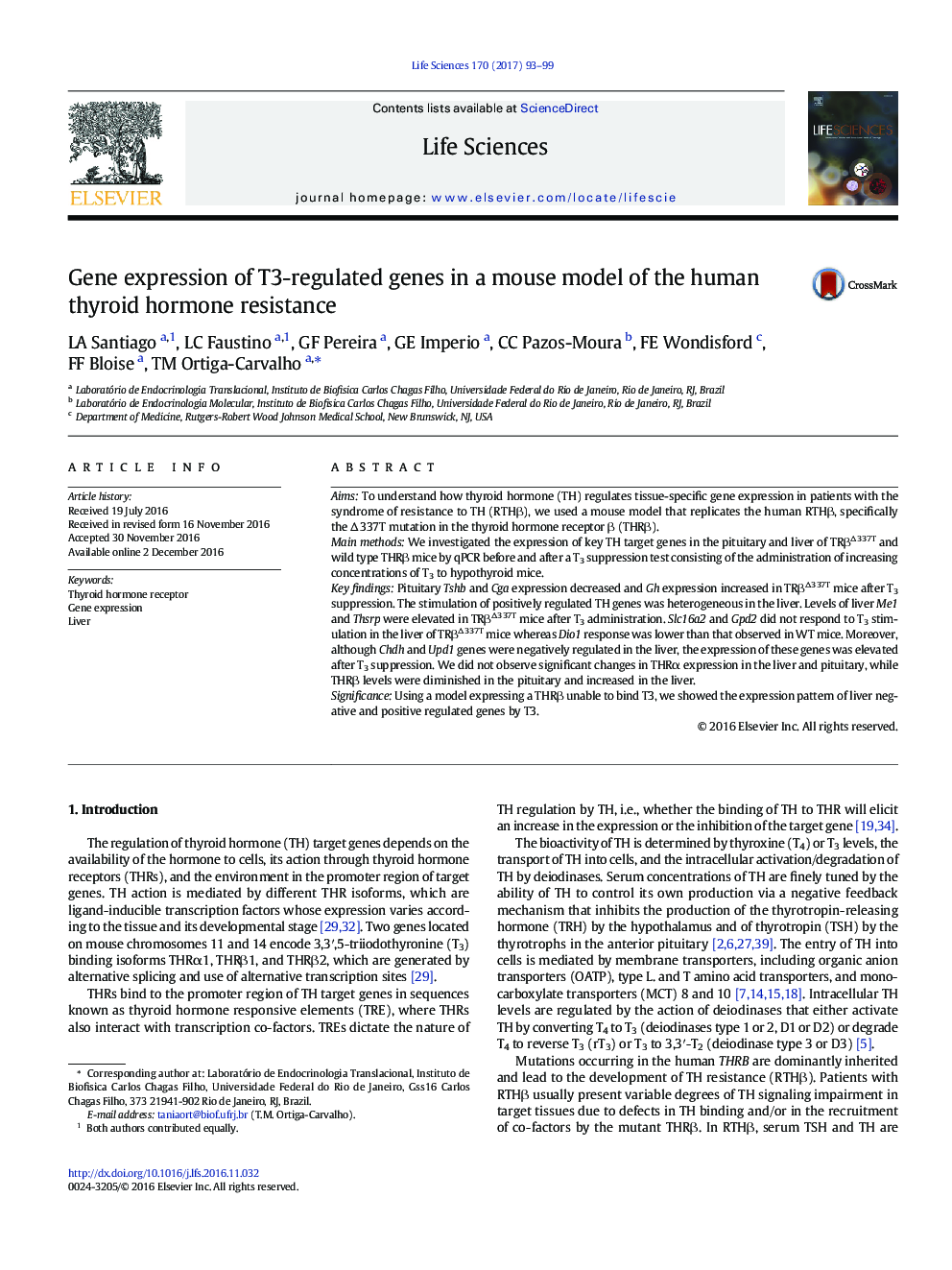| Article ID | Journal | Published Year | Pages | File Type |
|---|---|---|---|---|
| 5556999 | Life Sciences | 2017 | 7 Pages |
AimsTo understand how thyroid hormone (TH) regulates tissue-specific gene expression in patients with the syndrome of resistance to TH (RTHβ), we used a mouse model that replicates the human RTHβ, specifically the â 337T mutation in the thyroid hormone receptor β (THRβ).Main methodsWe investigated the expression of key TH target genes in the pituitary and liver of TRβâ 337T and wild type THRβ mice by qPCR before and after a T3 suppression test consisting of the administration of increasing concentrations of T3 to hypothyroid mice.Key findingsPituitary Tshb and Cga expression decreased and Gh expression increased in TRβâ 337T mice after T3 suppression. The stimulation of positively regulated TH genes was heterogeneous in the liver. Levels of liver Me1 and Thsrp were elevated in TRβâ 337T mice after T3 administration. Slc16a2 and Gpd2 did not respond to T3 stimulation in the liver of TRβâ 337T mice whereas Dio1 response was lower than that observed in WT mice. Moreover, although Chdh and Upd1 genes were negatively regulated in the liver, the expression of these genes was elevated after T3 suppression. We did not observe significant changes in THRα expression in the liver and pituitary, while THRβ levels were diminished in the pituitary and increased in the liver.SignificanceUsing a model expressing a THRβ unable to bind T3, we showed the expression pattern of liver negative and positive regulated genes by T3.
